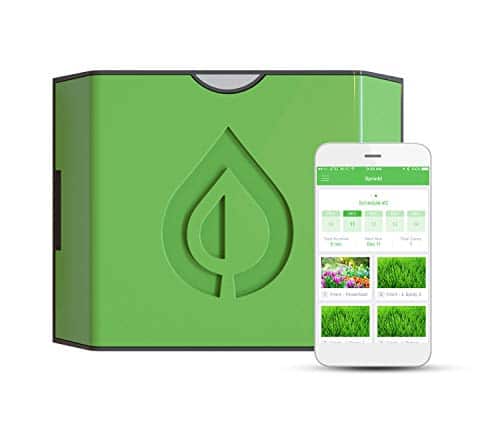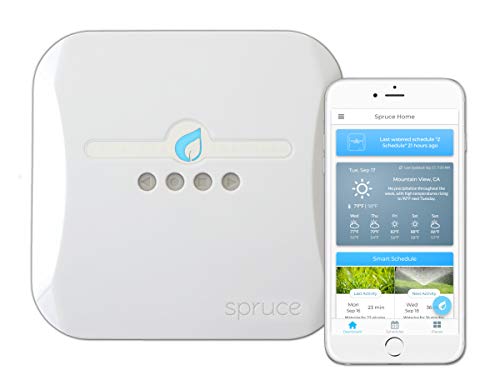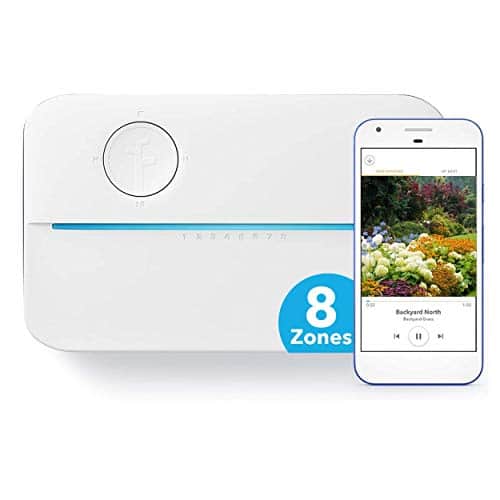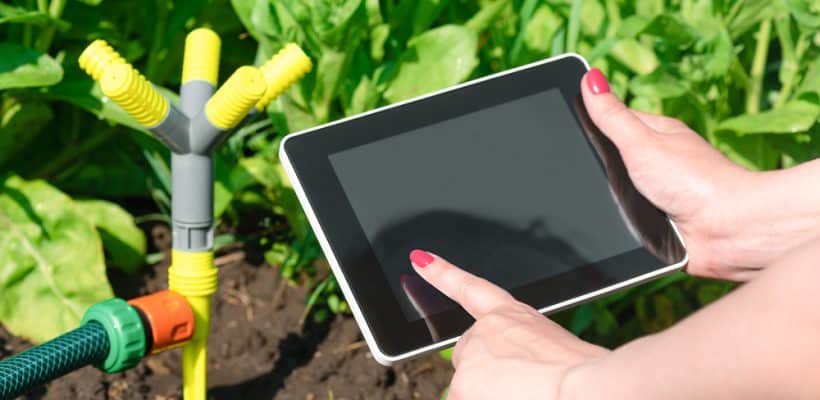Welcome to your definitive guide on installing a smart sprinkler system, where modern technology meets gardening to revolutionize how we nurture our outdoor spaces. Today, achieving a vibrant, green lawn does not have to come at the expense of excessive water usage or manual labor. Smart sprinklers embody the pinnacle of convenience, water conservation, and cost efficiency. This guide will walk you through each step of installing your smart sprinkler controller, emphasizing the profound impact it will have on your garden care routine. Embrace the future of landscaping with us, and see how an efficient watering system can do wonders for your yard and the environment alike.
Detailed Step-by-Step Installation Guide
1. Choosing the Right System
Begin by diving into research to find a smart sprinkler controller that fits the unique needs of your yard’s size and layout. Look for advanced features such as real-time weather tracking, seamless mobile app integration, and the ability to work harmoniously with other smart home gadgets. Brands like Rachio, RainMachine, and Orbit offer various models tailored to different requirements and budgets.
2. Turning Off the Water Supply
Prioritize safety by shutting off the water supply to your existing sprinkler system. This preventive measure is crucial to avoid any potential accidents or water wastage during the installation phase.
3. Removing the Old Controller
Carefully disconnect your old sprinkler controller. Label each zone wire and take pictures before removal to ensure a smooth transition. This step is vital for remembering the configuration of your zones.
4. Installing the Smart Controller
Securely mount your new smart controller on the wall. Attach each zone wire to its corresponding terminal as per the detailed instructions provided by the manufacturer. This process is crucial for the functionality of each zone.
5. Wi-Fi Connection
Connect your smart controller to your home Wi-Fi to enable it to receive timely weather updates and allow for remote operation through its app. This step is the cornerstone of leveraging the smart capabilities of your system.
6. Setting Up Zones
With the smart controller’s app, define your watering zones with precision. Customize the watering needs based on the specific requirements of each area, considering factors like plant variety, soil type, and sunlight exposure. This customization is key to achieving efficient water use.
7. System Testing
Perform a thorough test to verify that all zones are operational and making adjustments to sprinkler heads as necessary to guarantee complete coverage. This final step ensures that your system is ready to function at its best.

Benefits of a Smart Sprinkler System
Enhanced Water Conservation
Smart sprinkler systems are adept at utilizing weather forecasts and soil moisture data to intelligently adjust watering schedules. This not only prevents over watering but also ensures your garden receives the exact amount of water it needs, when it needs it.
Significant Cost Savings
The efficiency of smart sprinklers in using water judiciously directly impacts your utility bills, leading to considerable savings over time. Investing in such a system is financially savvy, as it eventually offsets its initial cost.
Unparalleled Time Efficiency
Automating your watering schedules frees you from the task of manual watering, allowing more time for other gardening projects or simply to enjoy your outdoor space.
Flourishing Plants and Lawn
Smart watering contributes to deeper root growth and reduces disease susceptibility, resulting in a more robust and vibrant lawn and garden.
Positive Environmental Impact
By significantly reducing water waste, smart sprinkler systems play a crucial role in conserving precious water resources and reducing environmental footprint.
Seamless Smart Home Integration
Enhance your home automation by connecting your smart sprinkler system with other smart devices, creating a more efficient and responsive home ecosystem.

Selecting the Best Smart Sprinkler Controller
Selecting the best smart sprinkler controller for your garden is a pivotal decision that can significantly affect the efficiency of your watering system, the health of your lawn and plants, and the overall ease of managing your garden’s irrigation needs. To make an informed choice, consider the following expanded criteria:
Compatibility with Your Garden’s Layout
- Size and Zone Capacity: Ensure the controller can accommodate the number of zones in your garden. If you have a large garden or plan to expand, opt for a controller that can manage a higher number of zones.
- Type of Plants and Lawn: Different areas of your garden may have varied watering needs. Look for controllers that allow customized watering schedules for different zones to cater to the specific requirements of your lawn, flowers, vegetables, and shrubs.
Weather Intelligence Features
- Weather Adaptation: A key feature of smart controllers is their ability to adjust watering based on local weather conditions. Opt for a model that uses real-time weather data to skip watering before, during, or after rain, during freezing temperatures, or in high wind conditions that would reduce watering efficiency.
- Evapotranspiration (ET) Support: Some advanced models calculate evapotranspiration — the sum of evaporation and plant water use — to adjust watering schedules dynamically, ensuring your garden receives precisely the amount of water it needs.
Ease of Use and Installation
- User Interface: The best smart controllers offer intuitive interfaces, both on the device itself and through their accompanying apps. Look for a controller that provides a straightforward setup process, easy scheduling, and the ability to quickly adjust settings as needed.
- App Functionality: A robust mobile or web app is crucial for managing your irrigation system remotely. Consider apps that provide detailed water usage reports, customizable watering plans, and alerts for system issues.
Integration with Smart Home Systems
- Ecosystem Compatibility: If you have other smart devices in your home, such as voice assistants (Amazon Alexa, Google Assistant), smart home hubs, or security systems, look for a smart sprinkler controller that can integrate seamlessly with your existing ecosystem.
- Automation Capabilities: Some controllers offer automation features beyond weather-based adjustments, such as soil moisture sensors that can provide even more precise watering based on actual soil conditions.
Energy Efficiency and Environmental Impact
- Certifications: Look for controllers that are EPA WaterSense certified, which indicates they meet strict criteria for water efficiency and have been independently tested to save water without sacrificing performance.
- Sustainability Features: Consider models that promote environmental sustainability, such as offering detailed water usage reports and suggestions for reducing water waste.
Support and Warranty
- Customer Support: Good customer service can make a big difference, especially when setting up and troubleshooting. Look for companies with a reputation for responsive and helpful support.
- Warranty and Reliability: Check the warranty period offered by the manufacturer, as it can be an indicator of the product’s durability and the company’s confidence in its reliability.
Reviews and Recommendations
- Professional Reviews: Websites like Wired, CNET, and Consumer Reports provide in-depth analyses and comparisons of smart sprinkler controllers, which can be invaluable in making your decision.
- User Feedback: Customer reviews on retail websites and forums offer insights into real-world usage, reliability issues, and the effectiveness of different models in various conditions.
By carefully considering these factors, you can select a smart sprinkler controller that not only meets your current needs but also adapts to future changes in your garden, technology, and environmental conditions. This selection process will ensure you invest in a system that brings convenience, efficiency, and sustainability to your garden care routine.

Maintaining Your Smart Sprinkler System
Maintaining your smart sprinkler system is crucial for ensuring its longevity, efficiency, and effectiveness in watering your garden. Regular maintenance not only helps in preventing potential issues but also ensures that your garden is being watered optimally. Here’s an expanded guide on how to maintain your smart sprinkler system:
Regular Inspections
- Monthly Check-ups: Conduct monthly inspections of all visible components of your sprinkler system, including sprinkler heads, valves, and pipes. Look for signs of wear, damage, or leaks, and address any issues promptly to prevent water wastage or damage to your garden.
- Seasonal Adjustments: Adjust your watering schedules with the changing seasons. Many smart sprinkler systems can automate this process, but manual checks can ensure that the settings are optimized for current weather patterns and garden needs.
Cleaning and Repairing
- Sprinkler Heads: Clean sprinkler heads regularly to remove dirt, grass clippings, or debris that can clog them. A clogged sprinkler head can reduce the efficiency of your watering system and lead to dry spots in your garden.
- Valves and Filters: Check the system’s valves and filters for blockages or signs of wear. Clean or replace them as needed to maintain optimal water flow and pressure.
System Updates and Adjustments
- Firmware Updates: Keep your smart sprinkler controller’s software up to date. Manufacturers often release firmware updates that improve system performance, add new features, and patch security vulnerabilities.
- Adjusting Watering Schedules: Use the data and insights provided by your smart sprinkler system to fine-tune watering schedules regularly. Adjust for plant growth, seasonal changes, and any new landscaping to ensure efficient water use.
Winterization
- Prevent Freeze Damage: If you live in a region where temperatures drop below freezing, it’s essential to winterize your sprinkler system to prevent damage. This process usually involves turning off the water supply to the system and draining all the water from the pipes, valves, and sprinkler heads.
- Professional Assistance: Consider hiring a professional to winterize your system if you’re unsure how to do it properly. This can prevent costly repairs due to freeze damage.
Monitoring and Optimizing Performance
- Water Usage Reports: Review the water usage reports generated by your smart sprinkler system. These reports can provide valuable insights into your watering habits and help identify areas for improvement.
- Soil Moisture Sensors: If your system is equipped with soil moisture sensors, regularly check their placement and condition. These sensors are crucial for ensuring that your garden is watered based on actual soil moisture levels, further optimizing water use.
Engaging with Community and Support
- Online Forums and Communities: Join online communities or forums related to smart home technology and gardening. These platforms can be excellent resources for tips, troubleshooting advice, and new ideas for optimizing your sprinkler system.
- Customer Support: Don’t hesitate to reach out to the manufacturer’s customer support for help with troubleshooting issues, understanding new features, or getting advice on system upgrades.
By following these maintenance tips, you can ensure that your smart sprinkler system operates efficiently and effectively for years to come. Regular maintenance not only saves water and money but also contributes to a healthy, thriving garden.
Christian Rogers is a senior writer/editor at YardMasterz and specializes in exterior decor and landscape design. He writes about backyard products and gear and has used his landscape design experience to write for other industry publications including Smart Yards and Yard Life.
Highlights
♦ Has extensive experience in content development for landscape designers, outdoor product manufacturers
♦ Contributing author at YardMasterz since 2016
♦ Contributes to leading industry print and online publications
Christian’s expertise in designing amazing backyards spaces can be seen in his writing. He offers objective, insightful ideas and assessments of products while conducting thorough research and testing.
Latest posts by Christian Rogers
(see all)



